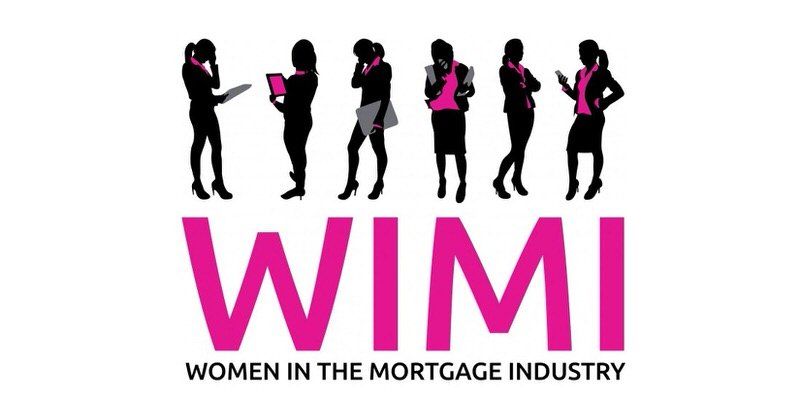Featured on WIMI Talks Episode 1
Sabeena Bubber • August 6, 2015
WIMI Talks Presents Episode #1 “We all started somewhere and we have all worked hard.”
Sabeena Bubber. Mortgage Broker Extraordinaire.
One thing I have noticed about ALL successful mortgage brokers is that they work very hard and they work very smart. Sabeena is no different.
I have never met a broker who as a child said, “I want to be a mortgage broker” and Sabeena is no different. Sabeena originally wanted to be a veterinarian, and then a famous photographer,. Famous, like Annie Leibovitz famous. But the practically of her Dad wanting to ensure all his daughters could be independent and self- reliant any time they wanted, pushed her to earning a Degree in Commerce.
In the recent past. Sabeena has been nominated for Mortgage broker of the year, has been in the top 75 for years and recently was recognized as a “Women of Influence” in the CMP Magazine.
Once in brokering, Sabeena has not looked back and I am thrilled to welcome her as my first guest on WIMI Talks.
Transcript
Congratulations on being one of 26 women recognized as a “Woman of Influence” in the CMP Magazine Issue 10.6. That definitely gives you some street cred!
Response: Thank you Catherine! I have to say that being recognized in this way is a huge honour. I look at the women on the list and I feel gobsmacked to be named on the same page of some of the trailblazers of our industry. Being recognized in this way is definitely an asset to my business.
You have also been in the top 75 brokers for volume for 5 years in a row and a finalist for mortgage broker of the year in 2015. It seems to me that you are really on your game right now.
How long have you been a mortgage broker?
Response: I was first licensed as a mortgage broker in 2004, however, I had already worked as a mortgage specialist with RBC since 2001.
And what did you do before becoming a mortgage broker?
Response: I was a “jack of all trades” for a while. After finishing my Commerce degree at the University of Regina, I sold publishing and print for a short period of time. Not only was I a terrible salesperson, but I felt like I was selling door to door and that wasn’t the vision I had for myself coming out of 4 years of university. I had wanted a career in advertising and marketing, but in Regina the related career opportunities were few and far between.
I decided to take a stab at financial services. I started working for Avco Financial Services which did loans at 32% and mortgages at 18%. I really learned everything about running a business there and I learned a TON about selling. You really have to know how to sell to your client when you are taking the focus off the rate (it’s only 2.5% per month that you pay in interest!). During my stint there, I transferred out to Vancouver as I had a life long dream of living in Vancouver and an even bigger dream to live on the North Shore some day.
Well, I was approached by an executive search for an underwriting position with a subprime American mortgage company servicing the broker market and the next thing I knew I was living my dream and working in downtown Vancouver, underwriting mortgages and living in North Vancouver. Eventually, I was lured into the idea that I should be on the broker side. To be honest, growing up, I saw my Dad, my mother in law, and other family members be severed/laid off from working with companies that they had given 20 years of their hard work to. To see them work so hard for someone else their whole life and then to be given an escort out the door because of company politics. I didn’t want that to be me. I knew that eventually I wanted to be self employed, but I didn’t know in what capacity that would be.
Even as an RBC mortgage specialist you had to start somewhere. When you started, where did you get customers?
Response: . I took my license but after I passed, I took a job with RBC as a mortgage specialist. I needed the 6 months of salary to make my mortgage payments while I built my business. I moved to Vancouver only 2 years prior and I didn’t know anybody. I “leveraged” RBC and the brand to help me grow my business. Brokers were still new to the industry at that time, and they weren’t as well known back then as they are now. I worked an insane amount of hours prospecting, chasing realtors and participating in a ton of networking groups. I developed relationships with the branches, and I committed to send them as much business as they would feed me and I rewarded my clients for referring me more clients. I had some simple strategies of speaking highly of my referral source when I got a referral, creating a fence around the client by making them feel that they had a good team.
Why did you leave RBC and make the leap to the mortgage broker side?
Response: I was already licensed as a broker and my long term plan was to stay at RBC so that I could have EI benefits when I had my kids and then to leave eventually. When my first daughter Anoushka was born, I took 5 months off work. The mortgage specialists went after all my Centre’s of Influence. I realized then that people that were my friends and colleagues were happy to take my business sources thinking that I wasn’t coming back. I had to spend a year and a half rebuilding what I lost from being away for 5 months. During that time, RBC also changed their compensation model, paying substantially less for deals we did for RBC clients and only compensating us nicely for new business brought to the bank. In my opinion, if I was going to outsource all my clients and hand them to the bank with no opportunity to be paid on refinances or switches, then I was far better off to be a mortgage broker, get double the compensation for a 5 year term mortgage and still have the possibility to retain the client at renewal. It was a “no brainer”.
Were you scared?
Response: I was very scared. I had a one year old daughter and I was planning to have another. I would no longer have the safety net of the branch referrals and I didn’t know if any clients would follow me over as a broker. All I knew was that my realtors would come with me and that I would essentially be starting from scratch again to rebuild my business. The difference this time was that I had a family to worry about as well. RBC was unhappy when I left. I was doing a high amount of volume with them and I was one of their top 5 specialists when I left. They told me I wouldn’t make it and they would make sure that I would never take any clients from RBC. They told me that no RBC mortgage specialist had left and succeeded and that I was safer having the “Big Blue” to back me up. All I could remember was the day that I met with my sales manager for my review when I had my “breakthrough year”. It was my first full year as a mortgage specialist. My manager at the start of the year had recommended a $12 million goal for sales for that year. I felt I could do $17 million and he said that I was setting myself up for failure and that I shouldn’t be so unrealistic. So we jointly set the goal at $12 million and then I personally set the goal at $17 million and was determined to prove him wrong. By the end of that year, I had done $43 million on a 12 million dollar goal.
When I went in for my review, I was expecting to hear accolades and get a big pat on the back and maybe, just maybe he would treat me like he treated his top male mortgage specialists. For ½ an hour, I had to listen to him belittle me about my lack of mortgage insurance sales. I knew then, that the only person that it mattered to was me and that I needed to move towards becoming a broker sooner rather than later and living life by my rules. I had no regrets about resigning from RBC.
Once you were brave enough to leave RBC did the business magically appear?
Response: Not immediately. I marketed to my realtors and continued to network. I contacted all my former clients by mail and by email but it was tougher to convert them than I thought it would be. I was so happy to have them call me but RBC was relentless in keeping them. My volume dropped after I left RBC, I worked less, but my income increased substantially. Who can complain about doing less deals and making more money? I knew that being a broker would be the right fit for me going into having my second child. But even that wasn’t roses. The firm I was with had an action plan for my maternity leave that didn’t end up coming together for me. So becoming a broker, cost me time off with my newborn. I was off for 10 days and went back to work. I had a 2 year old and a newborn and I didn’t sleep for a year. Was it tough? Yes, would I change my decision to be a broker? Absolutely not!
Today you are firing on all cylinders and getting well known in the industry. You seem to be doing everything right. You have an amazing website, you are blogging, networking, sharing your knowledge. We all know this takes time, patience, money and determination.
How do you keep the momentum?
Response: I have taken a number of self-development courses over the years, these have been my “vacations” of sorts, when I do these courses, I have invested time in learning about myself and also learning strategies on how to understand myself better so that I am a better person and a better professional. I always come back revitalized and energized when I introspect and discover things about myself. I’ve learned about what’s important to me. In digging deep a few years back, I really came to realize what matters to me in my business, with my clients, and most importantly with my family.
The formation of Xeva Mortgage was a big part of that. I wanted to purely be a broker again and give up the added responsibility of being an owner. Being an owner didn’t bring me any more prestige or recognition. The wonderful thing with Xeva is that I have known the partners for many years and I have a great deal of trust in them. What Xeva was 2 years ago and what it is now is incredible and I can’t wait to see where it goes. Now, being purely a broker again, I have the momentum that I had in the beginning of my career when I was growing it. I am focusing on the things that are important to me. Authentically connecting with my clients, my referral sources and everyone around me. Making time for my friends and spending as much time with my family as I can. Having Fun! Life is short and I have no idea how long I’m going to be on this planet so I’m not waiting to do things, I am enjoying my life now. I feel so grateful to have such an incredible life and I don’t want to look back on things and have regret. I want to look at my bucket list every year and know that I’ve taken a few things off of it.
Time management has been a critical piece for me. I carve time out of every day for quality time with my girls. In order to spend that time with them, I need to be efficient in completing my work tasks during the day. I don’t like to work after hours so I try to accomplish as much as possible during the day and I work two late nights a week and Saturday mornings where required. I limit my “lunches/coffees” and I manage my relationships via telephone. I am fortunate that the small group of realtors that I deal with don’t expect me to wine and dine them. They understand that I am juggling many balls in the air and that they know that when they send me a client that I will be available and committed to get the job done.
I read a book last year called, The Morning Miracle by Hal Elrod. Essentially, successful people don’t sleep away their mornings, they get up, meditate, journal and exercise to wake up their brains in the morning and get themselves fired up for success. I had already been doing some meditation and journaling for a little over a year and had great success with it, adding the extra elements from the miracle morning. I plan every part of my week carefully, every meeting, what I am doing in between, my girls activities and school schedules, and even every meal. When I’m at my office, I don’t run out to grab a bite to eat, I prepare healthy snacks and lunches for myself for the week so that’s one less thing I have to think about.
If you were to start all over again, what would you do differently?
Response: I wish that Xeva Mortgage had been created 5 years earlier. But I don’t think I would have appreciated it as much as I do now. I had to experience life the hard way to realize how good I have it now.
If you were to give 2 pieces of advice to a new broker what would they be?
Response: Believe anything is possible. ACT as if it is possible. Live like you already have it. Because it’s coming. You’re only as good as your last deal, so never stop prospecting.
This is a 3rd piece of advice which is to remember to respect everyone in your network, be it clients, referral sources, lenders, everyone. No matter how big your volume or how good you are, WHO you are is what matters. Don’t lose your cool and treat people the way that you want to be treated, with respect.
What’s next for Sabeena Bubber in the mortgage industry?
Response: I am excited we have a group of WIMI members going to the Todd Duncan Sales Mastery in Palm Springs in October. An event like this will bring us together as a group and will also give us the opportunity to develop “accountability Partners” on implementing 2 or 3 things that we learn that we want to tweak in our business.
It’s important to me to see other women succeed in this business. We as a community of brokers and as women have to lift each other up and encourage each other to succeed. I am always trying to improve upon myself and my business to grow it and to achieve the things that I know are important to me in my business.
SHARE THIS ARTICLE
RECENT POSTS

Bank of Canada maintains policy rate at 2.1/4%. FOR IMMEDIATE RELEASE Media Relations Ottawa, Ontario December 10, 2025 The Bank of Canada today held its target for the overnight rate at 2.25%, with the Bank Rate at 2.5% and the deposit rate at 2.20%. Major economies around the world continue to show resilience to US trade protectionism, but uncertainty is still high. In the United States, economic growth is being supported by strong consumption and a surge in AI investment. The US government shutdown caused volatility in quarterly growth and delayed the release of some key economic data. Tariffs are causing some upward pressure on US inflation. In the euro area, economic growth has been stronger than expected, with the services sector showing particular resilience. In China, soft domestic demand, including more weakness in the housing market, is weighing on growth. Global financial conditions, oil prices, and the Canadian dollar are all roughly unchanged since the Bank’s October Monetary Policy Report (MPR). Canada’s economy grew by a surprisingly strong 2.6% in the third quarter, even as final domestic demand was flat. The increase in GDP largely reflected volatility in trade. The Bank expects final domestic demand will grow in the fourth quarter, but with an anticipated decline in net exports, GDP will likely be weak. Growth is forecast to pick up in 2026, although uncertainty remains high and large swings in trade may continue to cause quarterly volatility. Canada’s labour market is showing some signs of improvement. Employment has shown solid gains in the past three months and the unemployment rate declined to 6.5% in November. Nevertheless, job markets in trade-sensitive sectors remain weak and economy-wide hiring intentions continue to be subdued. CPI inflation slowed to 2.2% in October, as gasoline prices fell and food prices rose more slowly. CPI inflation has been close to the 2% target for more than a year, while measures of core inflation remain in the range of 2½% to 3%. The Bank assesses that underlying inflation is still around 2½%. In the near term, CPI inflation is likely to be higher due to the effects of last year’s GST/HST holiday on the prices of some goods and services. Looking through this choppiness, the Bank expects ongoing economic slack to roughly offset cost pressures associated with the reconfiguration of trade, keeping CPI inflation close to the 2% target. If inflation and economic activity evolve broadly in line with the October projection, Governing Council sees the current policy rate at about the right level to keep inflation close to 2% while helping the economy through this period of structural adjustment. Uncertainty remains elevated. If the outlook changes, we are prepared to respond. The Bank is focused on ensuring that Canadians continue to have confidence in price stability through this period of global upheaval. Information note The next scheduled date for announcing the overnight rate target is January 28, 2026. The Bank’s next MPR will be released at the same time.

Want a Better Credit Score? Here’s What Actually Works Your credit score plays a major role in your ability to qualify for a mortgage—and it directly affects the interest rates and products you’ll be offered. If your goal is to access the best mortgage options on the market, improving your credit is one of the smartest financial moves you can make. Here’s a breakdown of what truly matters—and what you can start doing today to build and maintain a strong credit profile. 1. Always Pay On Time Late payments are the fastest way to damage your credit score—and on-time payments are the most powerful way to boost it. When you borrow money, whether it’s a credit card, car loan, or mortgage, you agree to repay it on a schedule. If you stick to that agreement, lenders reward you with good credit. But if you fall behind, missed payments are reported to credit bureaus and your score takes a hit. A single missed payment over 30 days late can hurt your score. Missed payments beyond 120 days may go to collections—and collections stay on your report for up to six years . Quick tip: Lenders typically report missed payments only if they’re more than 30 days overdue. So if you miss a Friday payment and make it up on Monday, you're probably in the clear—but don't make it a habit. 2. Avoid Taking On Unnecessary Credit Once you have at least two active credit accounts (like a credit card and a car loan), it’s best to pause on applying for more—unless you truly need it. Every time a lender checks your credit, a “hard inquiry” appears on your report. Too many inquiries in a short time can bring your score down slightly. Better idea? If your current lender offers a credit limit increase , take it. Higher available credit (when used responsibly) actually improves your credit utilization ratio, which we’ll get into next. 3. Keep Credit Usage Low How much of your available credit you actually use—also known as credit utilization —is another major factor in your score. Here’s the sweet spot: Aim to use 15–25% of your limit if possible. Never exceed 60% , especially if you plan to apply for a mortgage soon. So, if your credit card limit is $5,000, try to keep your balance under $1,250—and pay it off in full each month. Maxing out your cards or carrying high balances (even if you make the minimum payment) can tank your score. 4. Monitor Your Credit Report About 1 in 5 credit reports contain errors. That’s not a small number—and even a minor mistake could cost you when it’s time to get approved for a mortgage. Check your report at least once a year (or sign up for a monitoring service). Look for: Incorrect balances Accounts you don’t recognize Missed payments you know were paid You can request reports directly from Equifax and TransUnion , Canada’s two national credit bureaus. If something looks off, dispute it right away. 5. Deal with Collections Fast If you spot an account in collections—don’t ignore it. Even small unpaid bills (a leftover phone bill, a missed utility payment) can drag down your score for years. Reach out to the creditor or collection agency and arrange payment as quickly as possible . Once settled, ask for written confirmation and ensure it’s updated on your credit report. 6. Use Your Credit—Don’t Just Hold It Credit cards won’t help your score if you’re not using them. Inactive cards may not report consistently to the credit bureaus—or worse, may be closed due to inactivity. Use your cards at least once every three months. Many people put routine expenses like groceries or gas on their cards and pay them off right away. It’s a simple way to show regular, responsible use. In Summary: Improving your credit score isn’t complicated, but it does take consistency: Pay everything on time Keep balances low Limit new credit applications Monitor your report and handle issues quickly Use your credit regularly Following these principles will steadily increase your creditworthiness—and bring you closer to qualifying for the best mortgage rates available. Ready to review your credit in more detail or start prepping for a mortgage? I’m here to help—reach out anytime!

Wondering If Now’s the Right Time to Buy a Home? Start With These Questions Instead. Whether you're looking to buy your first home, move into something bigger, downsize, or find that perfect place to retire, it’s normal to feel unsure—especially with all the noise in the news about the economy and the housing market. The truth is, even in the most stable times, predicting the “perfect” time to buy a home is incredibly hard. The market will always have its ups and downs, and the headlines will never give you the full story. So instead of trying to time the market, here’s a different approach: Focus on your personal readiness—because that’s what truly matters. Here are some key questions to reflect on that can help bring clarity: Would owning a home right now put me in a stronger financial position in the long run? Can I comfortably afford a mortgage while maintaining the lifestyle I want? Is my job or income stable enough to support a new home? Do I have enough saved for a down payment, closing costs, and a little buffer? How long do I plan to stay in the property? If I had to sell earlier than planned, would I be financially okay? Will buying a home now support my long-term goals? Am I ready because I want to buy, or because I feel pressure to act quickly? Am I hesitating because of market fears, or do I have legitimate concerns? These are personal questions, not market ones—and that’s the point. The economy might change tomorrow, but your answers today can guide you toward a decision that actually fits your life. Here’s How I Can Help Buying a home doesn’t have to be stressful when you have a plan and someone to guide you through it. If you want to explore your options, talk through your goals, or just get a better sense of what’s possible, I’m here to help. The best place to start? A mortgage pre-approval . It’s free, it doesn’t lock you into anything, and it gives you a clear picture of what you can afford—so you can move forward with confidence, whether that means buying now or waiting. You don’t have to figure this out alone. If you’re curious, let’s talk. Together, we can map out a homebuying plan that works for you.







